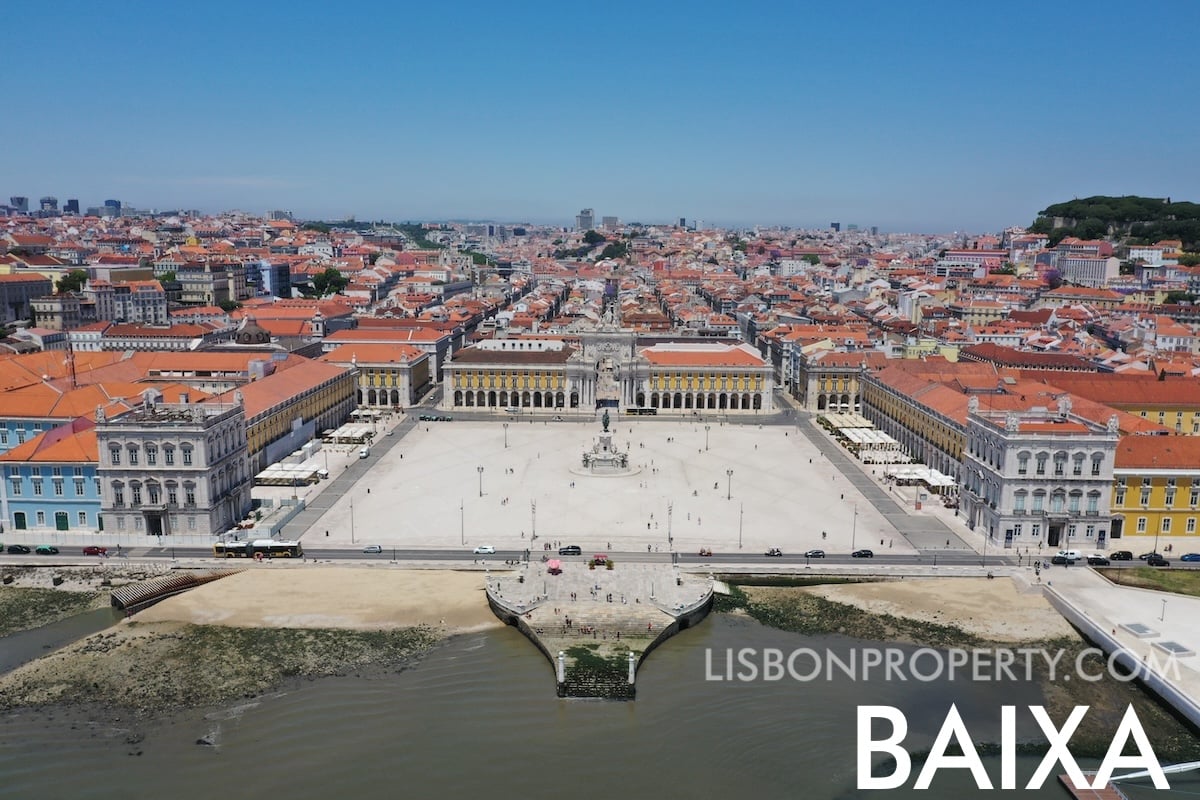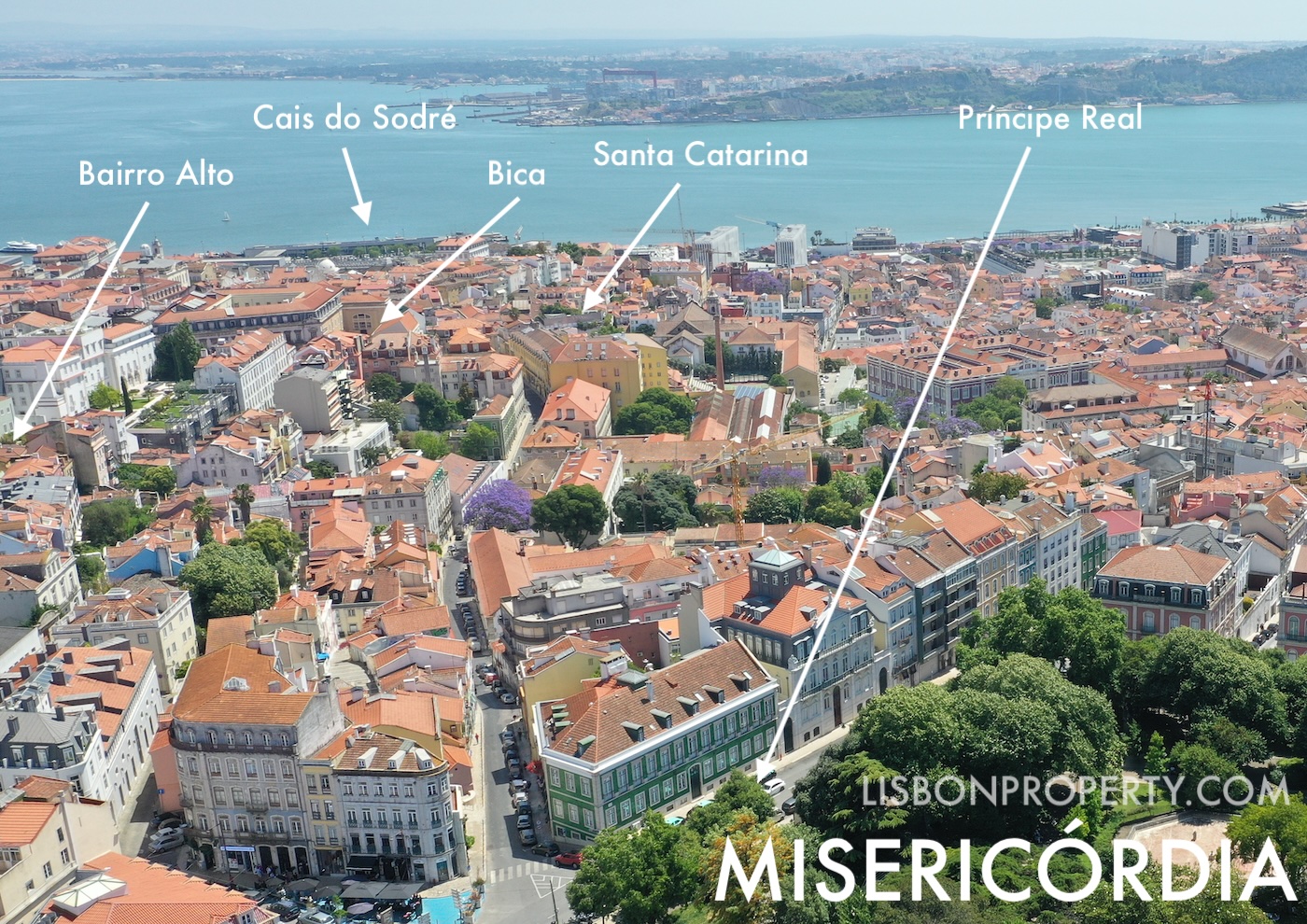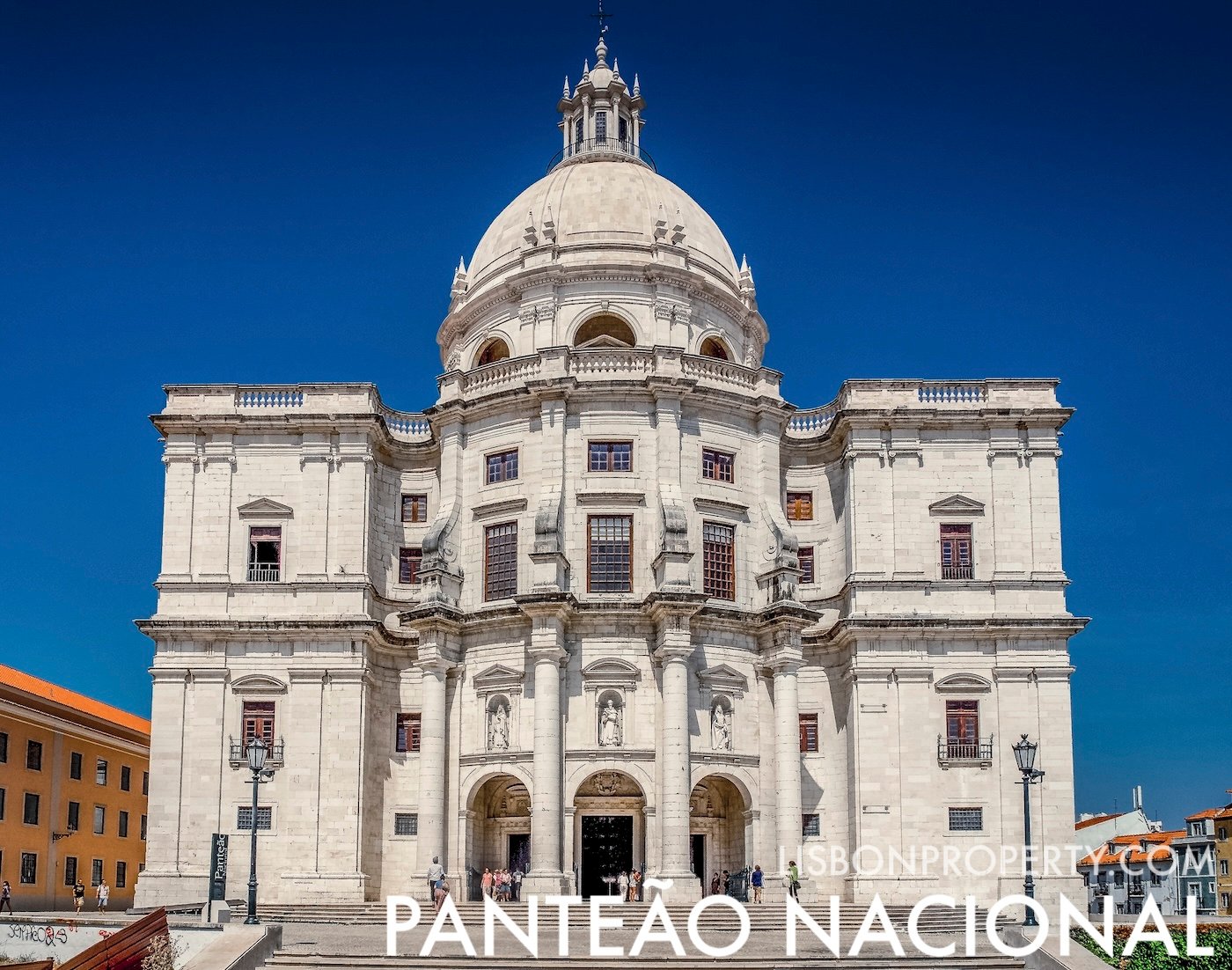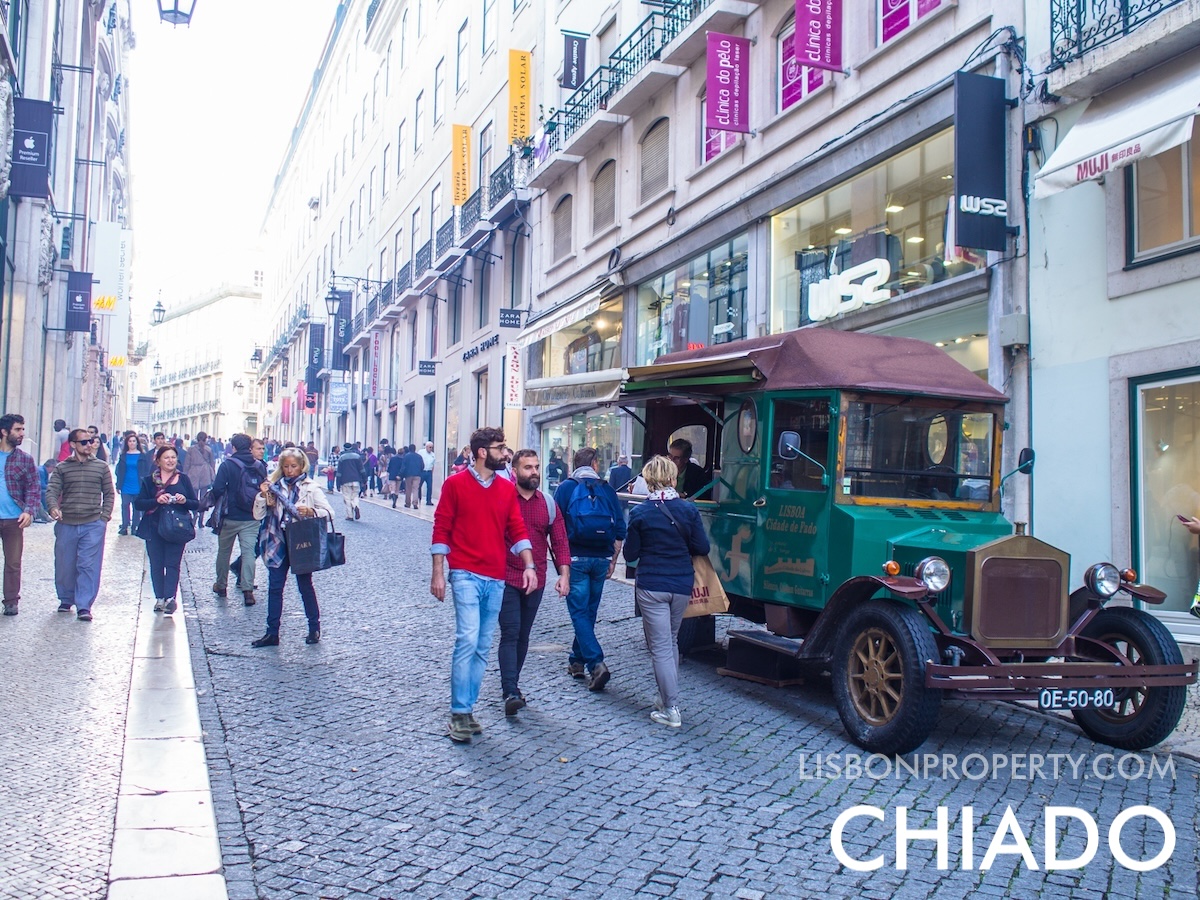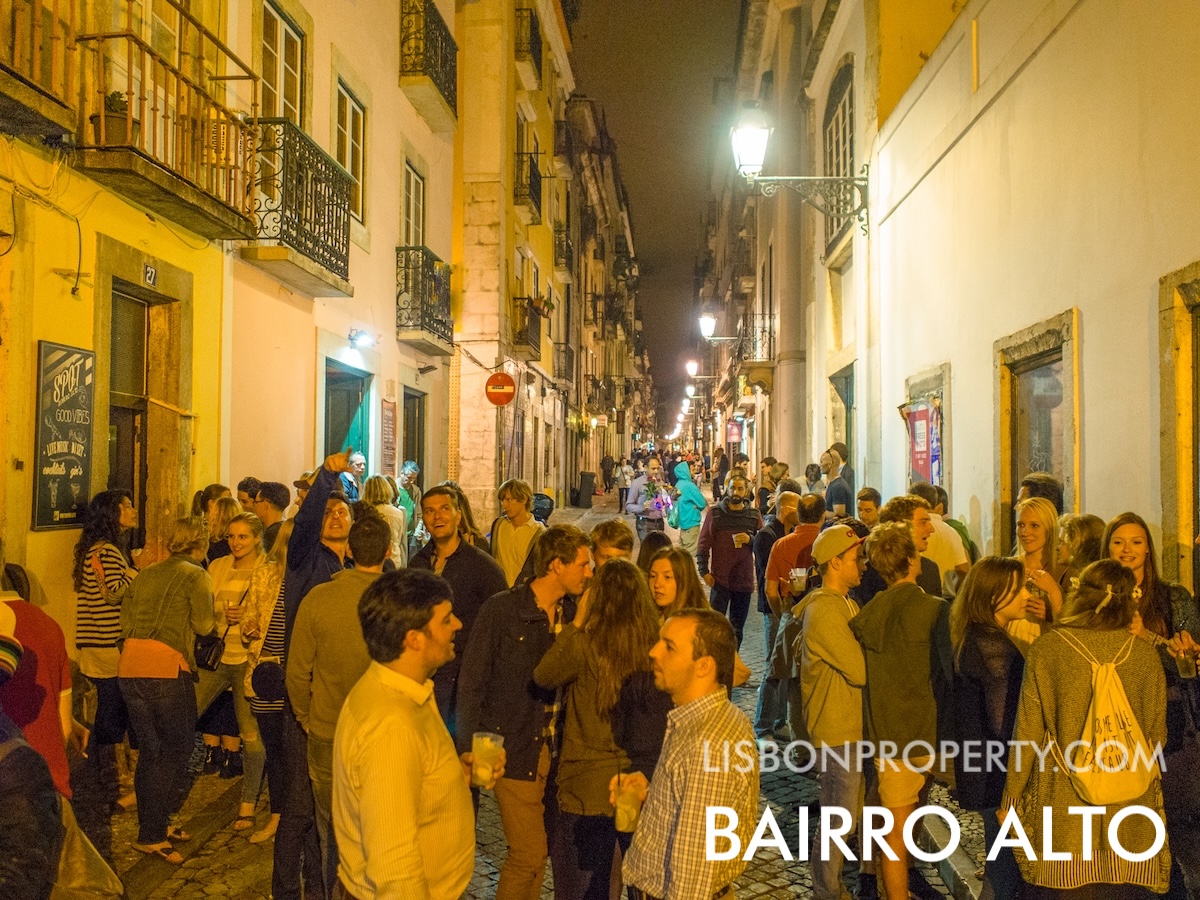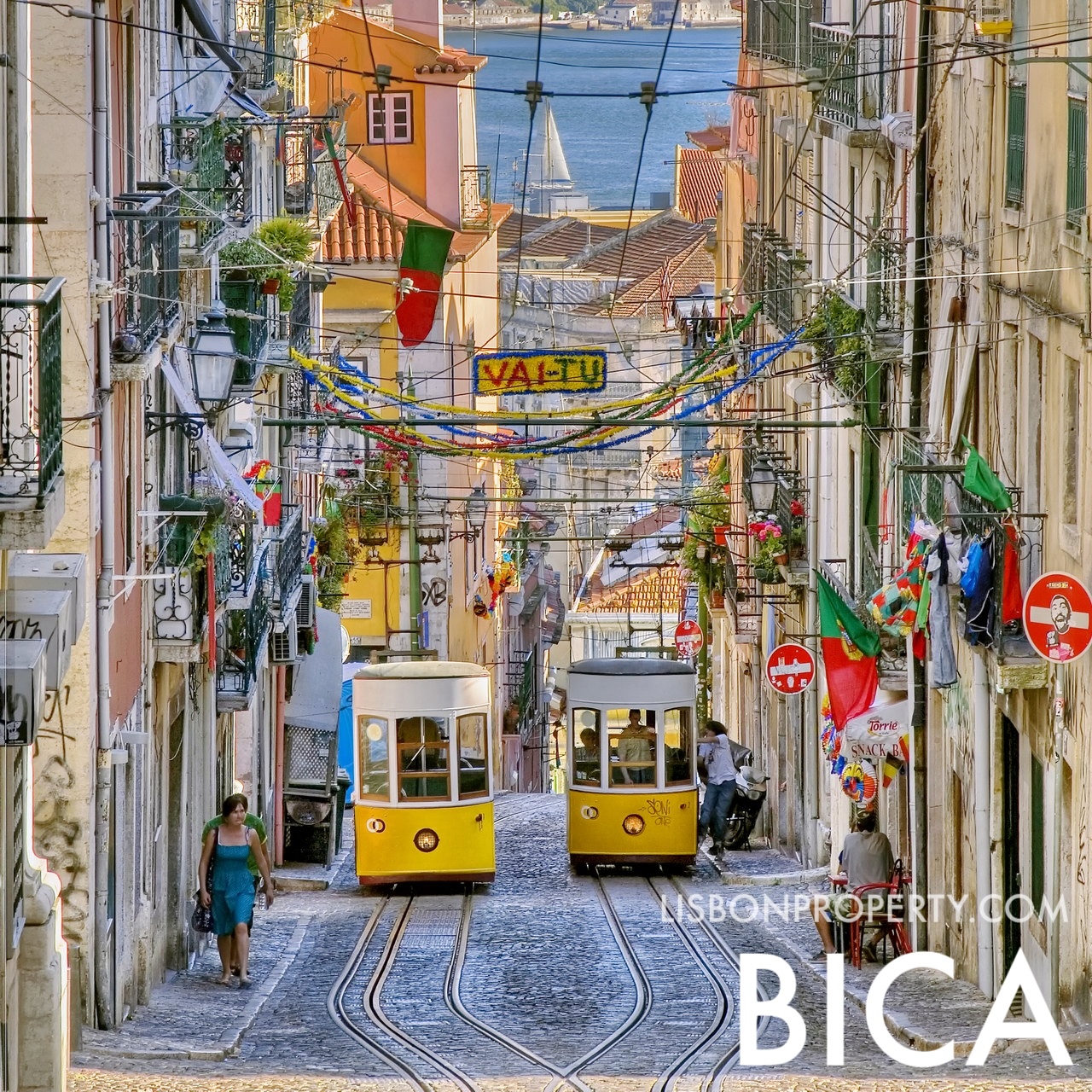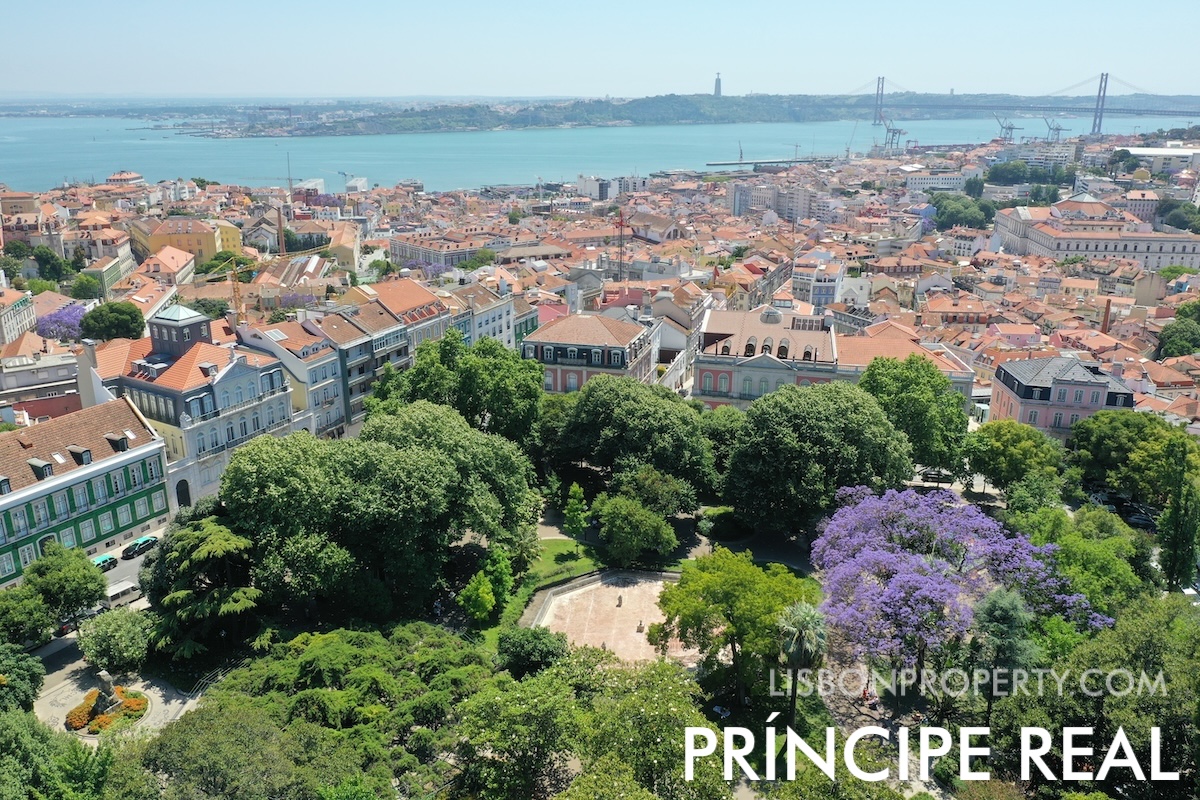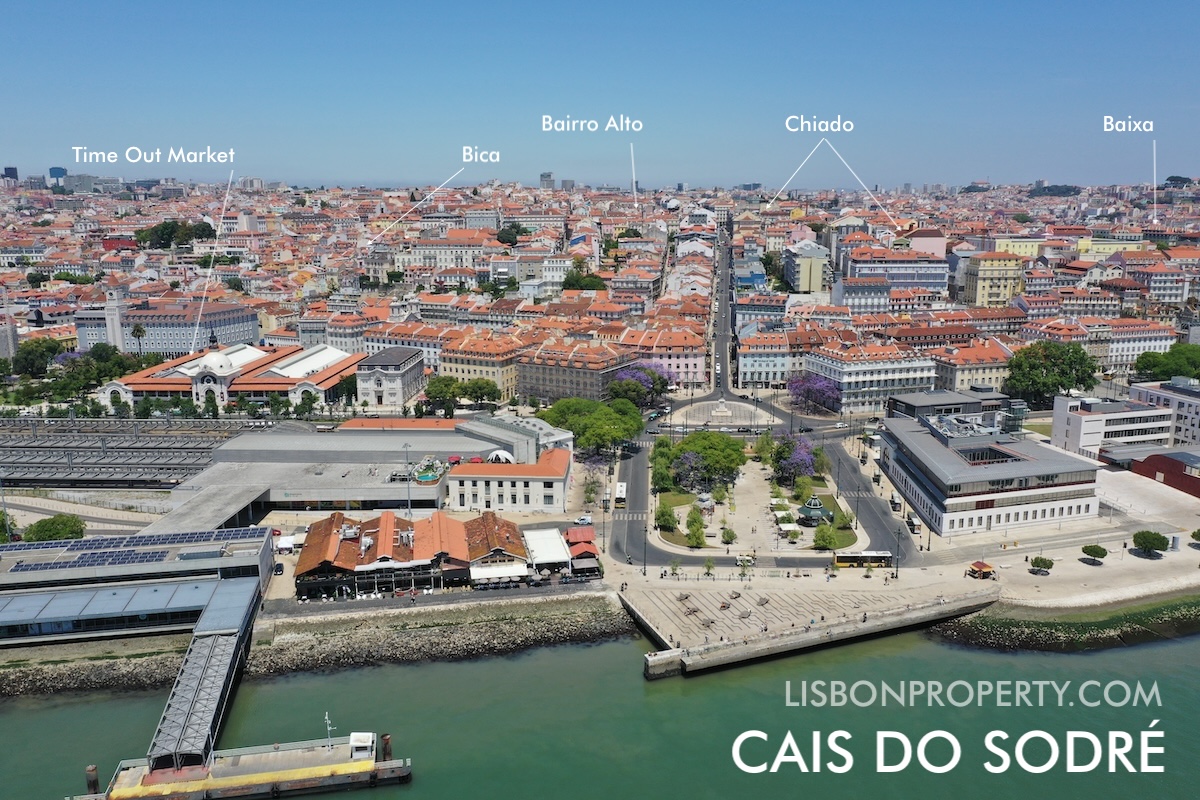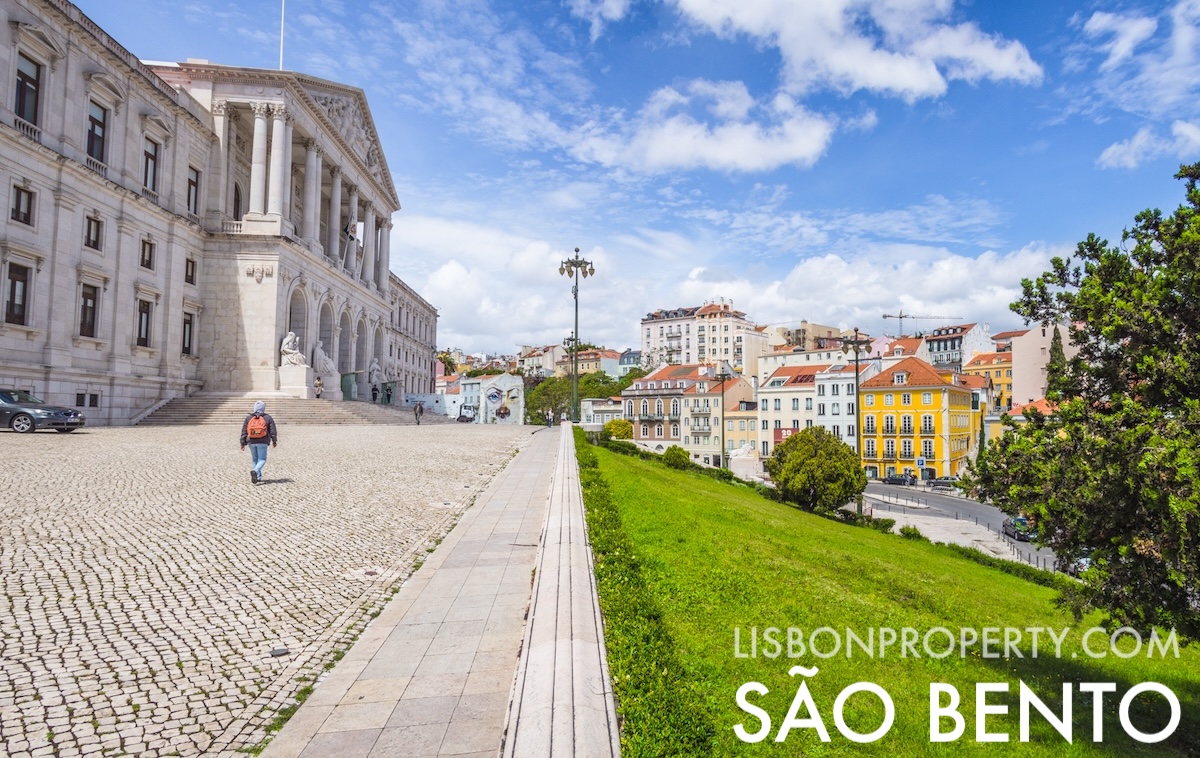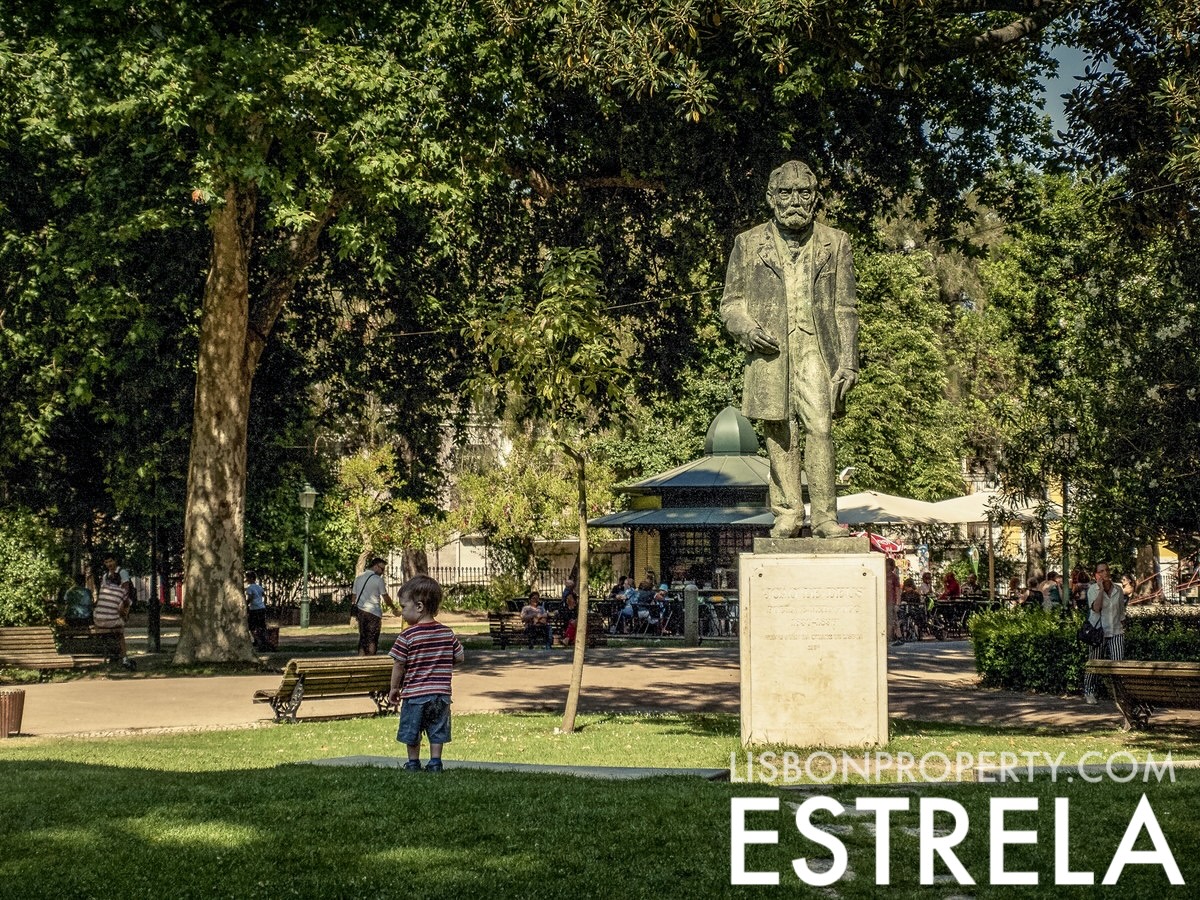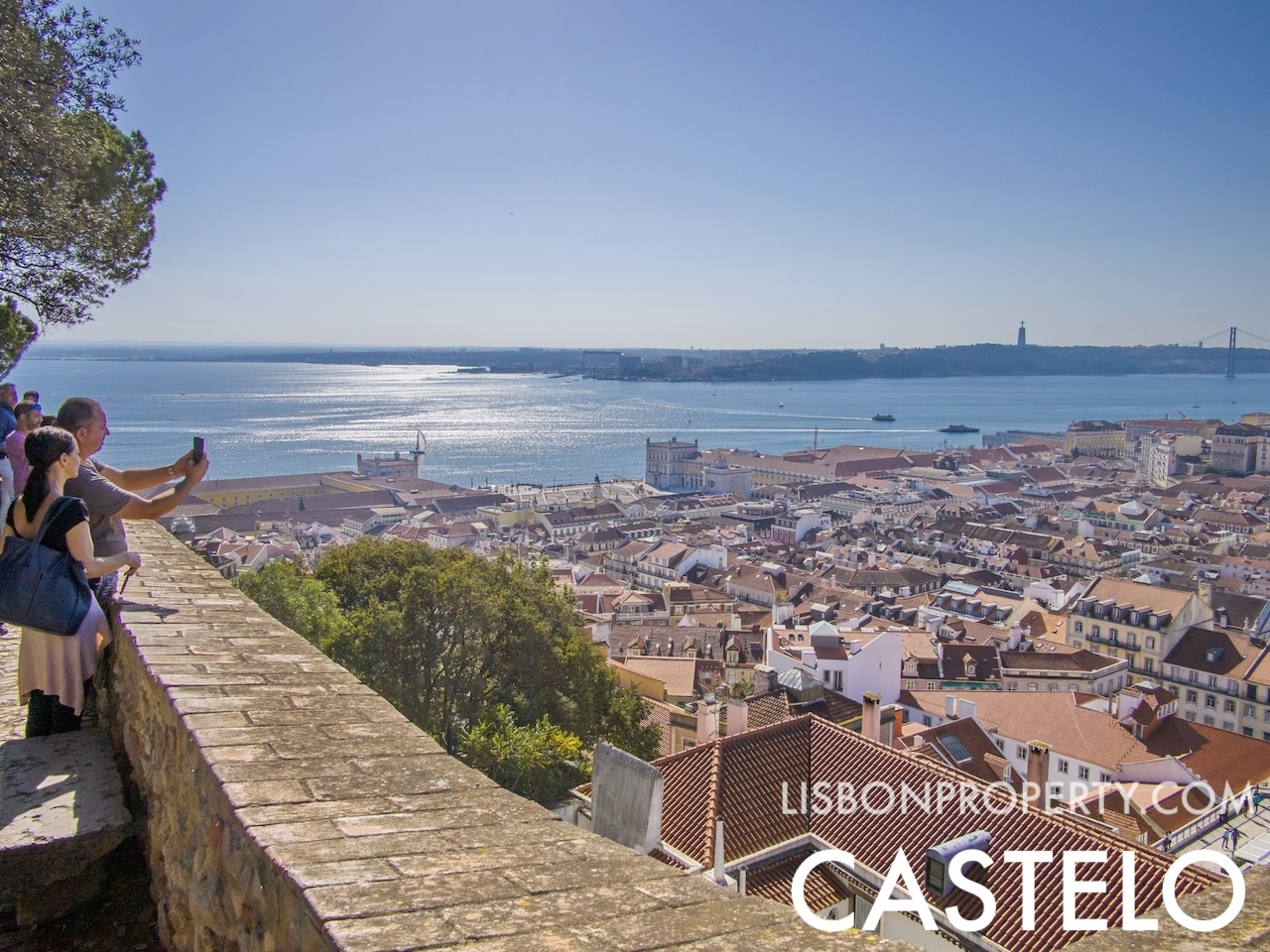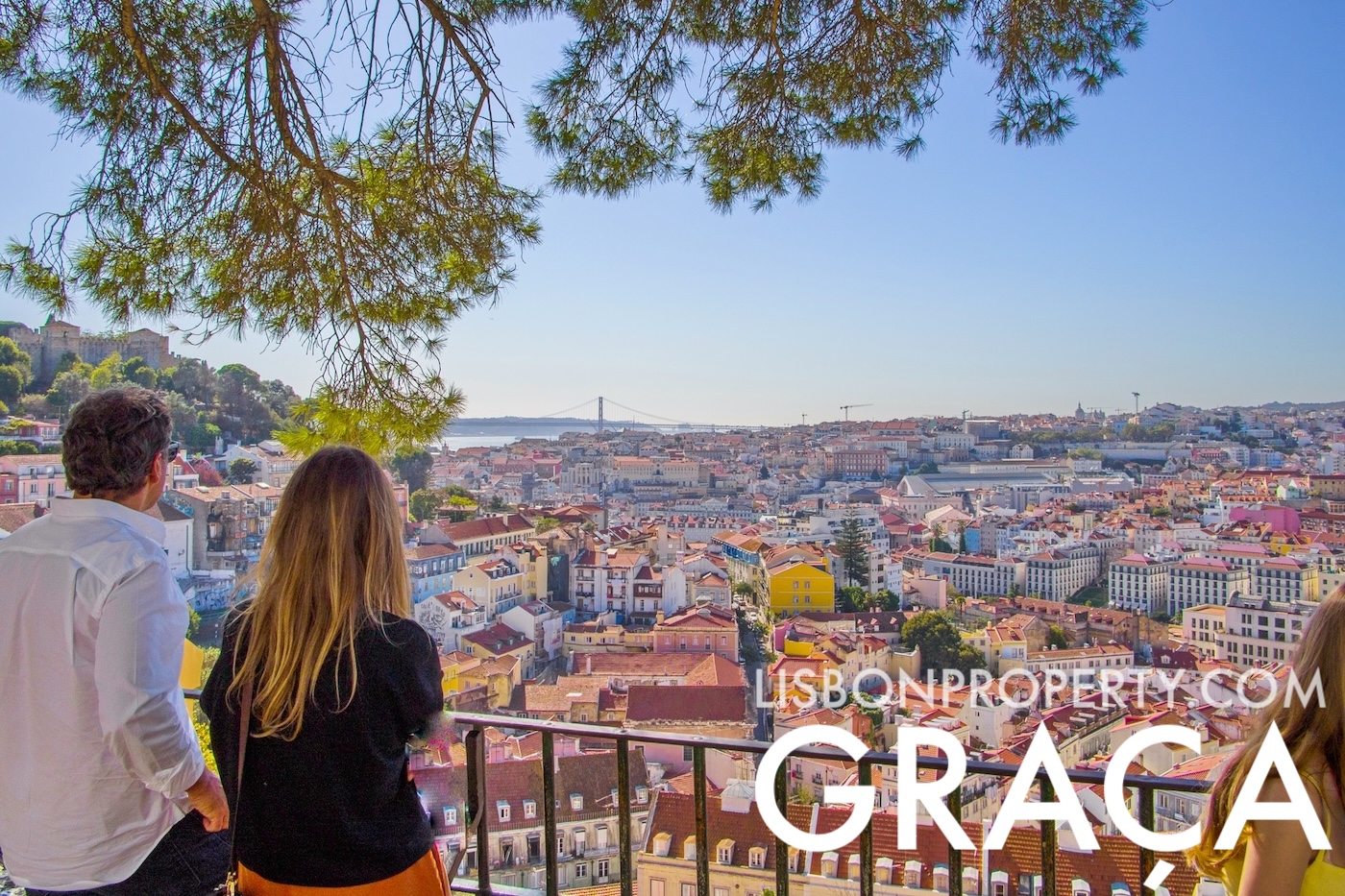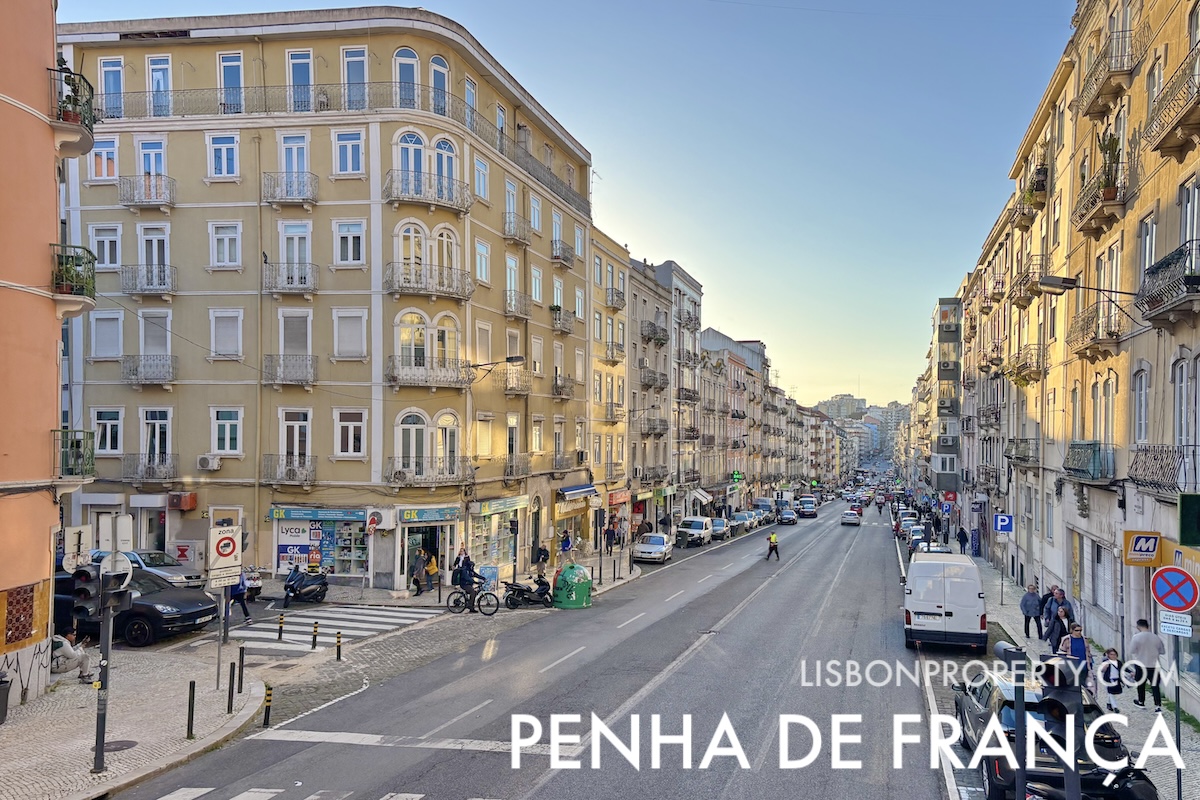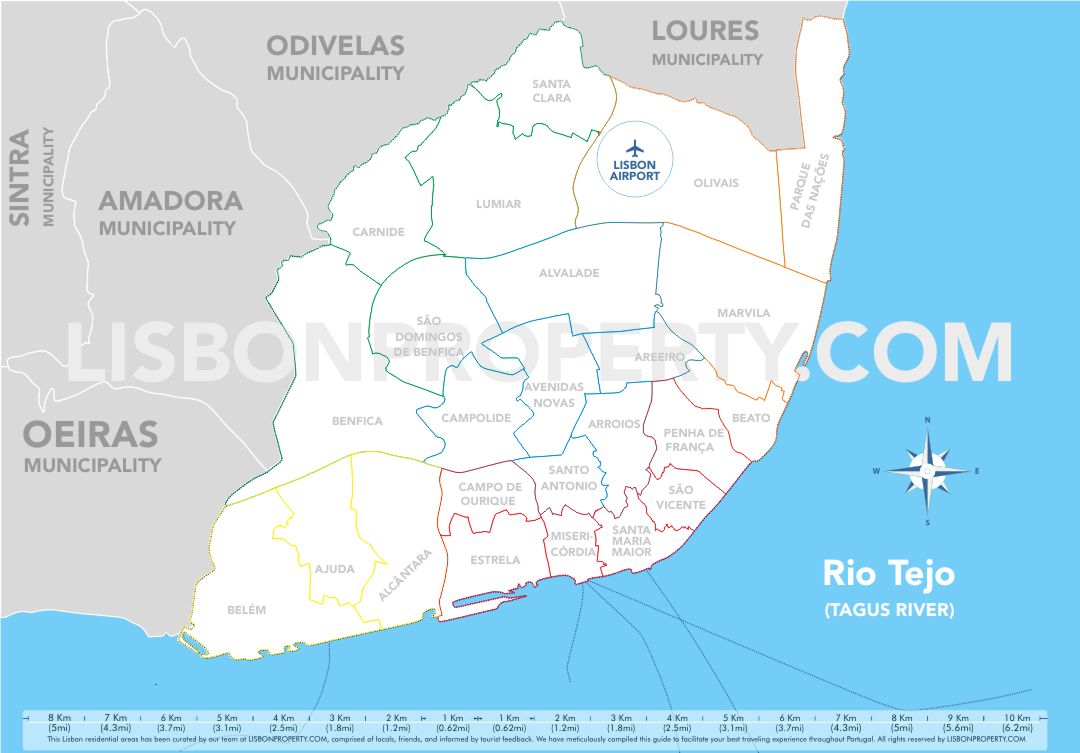Alfama • Lisbon neighbourhood, Portugal
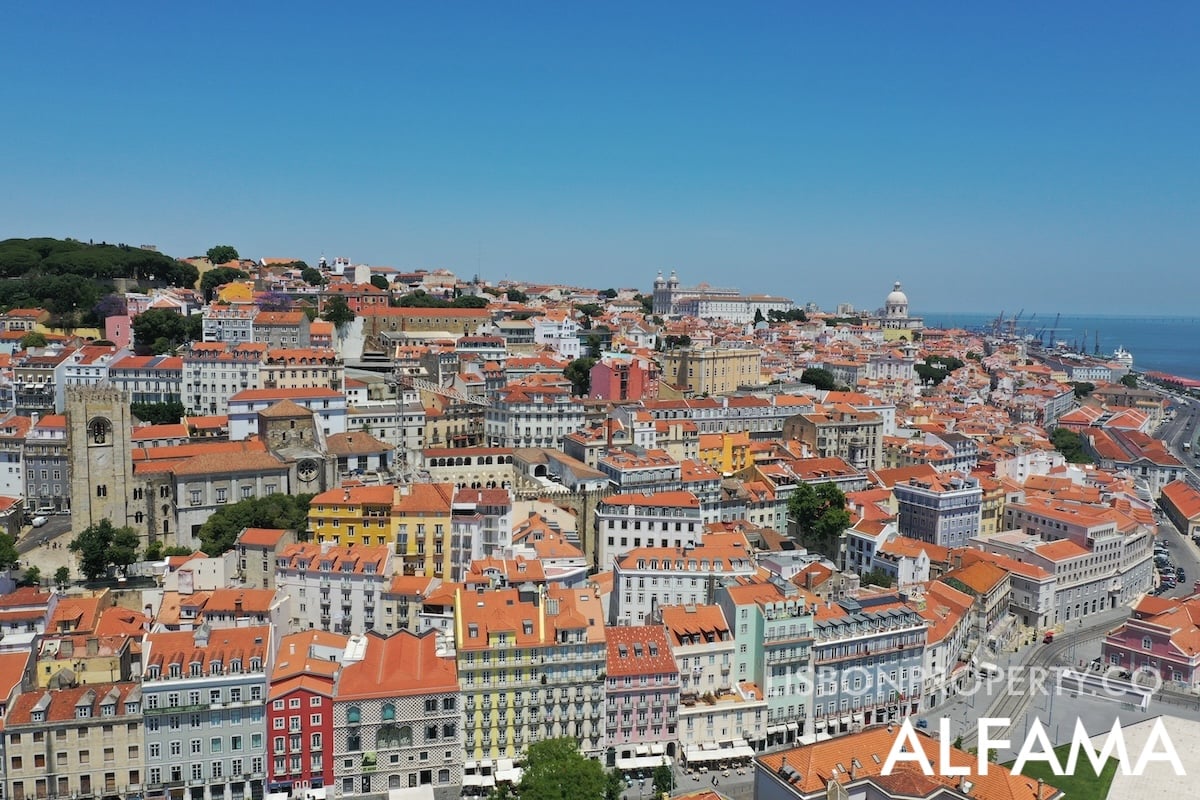
View of the colorful buildings of Alfama positioned in an amphitheater overlooking the river, with the labyrinthine streets… below we see the Casa dos Bicos, on the left side we see the Sé Cathedral, at the top left are the pine trees of the Castelo de São Jorge. On the right we can see the church of São Vicente de Fora, the national pantheon and the Santa Apolônia station with the cruise port
Alfama is the oldest neighborhood in Lisbon, with its origins dating back to the year 1200. Situated on the top of a hill, the district is divided between two parishes: part of it belongs to Santa Maria Maior (where the Lisbon Downtown is) and the other to São Vicente (Where Castelo de São Jorde, and Graça are). The name “Alfama” is derived from the Arabic term “al-hamma,” which translates to ‘source of warm waters’ or ‘good waters.’ This name is substantiated by Lisbon’s geological map, which highlights a group of mineral-medicinal springs associated with a geological fault that cuts through Miocene layers. Historically, these springs were channeled to supply fountains, known as “chafarizes,” such as the Chafariz de El-Rei and the Chafariz de Dentro. Today, Alfama stands as a labyrinthine district characterized by its narrow streets, historic landmarks, and rich cultural heritage, making it a compelling area for both residents and visitors alike.
Living in Alfama
- properties for sale in Alfama – Explore our selection of properties for sale in Alfama, or contact us for a free consultation on the best available and off-market options in Alfama.
Historical Alfama overview
Alfama is a historic neighborhood in Lisbon, with origins dating back to the times of the Phoenicians and Carthaginians. It later expanded under Roman rule, primarily due to the growth of fishing industries. Notably, the Alfama district was minimally affected by the 1755 Lisbon earthquake, providing a rare glimpse into pre-earthquake Lisbon.
Alfama is a window of pre-earthquake Lisbon
Initially a center for fishermen and laborers, Alfama has historically been home to Moorish and Jewish communities, with the latter concentrated in a district known as Judiaria. The area was politically autonomous concerning Jewish and Moorish communities until the 16th and 18th centuries, respectively. Located near the Lisbon harbor, its proximity to water has been crucial for trade and navigation.
In contrast to its historical significance, the area was neglected by the government until the 20th century. Despite discussions about demolishing and reconstructing the district, it has remained intact. The architecture of Alfama is characterized by close-knit houses that foster a strong sense of community. The neighborhood features such everyday sights as open doors, outdoor fish grilling, and laundry hanging in public spaces. It continues to be a vibrant area full of life and tradition, frequented by both tourists and locals. Today, the area is not only diverse and cosmopolitan but also retains a strong local identity, making it a significant destination for if you’re interested in traditional Portuguese culture.
A visit to Alfama is highly recommended for anyone interested in history, culture, or simply experiencing the local way of life in Lisbon.
Attractions, things to see and do in Alfama
Alfama as become a must visit Lisbon attraction. Top activities include walking around to experience the atmosphere, visiting the Castelo de São Jorge, the Sé de Lisboa (Lisbon Cathedral), and the Museu do Fado. Additionally, you can visit various viewpoints such as Miradouro de Santa Luzia and Miradouro das Portas do Sol for panoramic views of the city. Fado music, a genre native to Portugal which is recognized as a UNESCO-listed intangible cultural heritage, can be heard in many bars and restaurants in the area. However, contrary to popular belief that Fado originated in Alfama, it actually originated in the neighboring district of Mouraria. Nonetheless Fado is an integral part of the local culture and can often be heard in the street, cafes and bars around Alfama.
Let’s start to explore:
Walking Guide from Baixa to Alfama
- Starting Point: Terreiro do Paço (Praça do Comércio): Begin your journey at Terreiro do Paço, also known as Praça do Comércio. Walk under the Arco da Rua Augusta to enter Rua Augusta.
- Rua Augusta to Rua da Conceição: Proceed along Rua Augusta and turn right onto the third street, Rua da Conceição. Here, you’ll notice tram tracks on the road; these are for tram 28.
- Rua da Conceição to Rua de Santo António da Sé: Follow the tram tracks and continue until you reach the third intersecting street. This is where the elevation starts to rise. Turn onto Rua de Santo António da Sé.
- Church of Saint Anthony of Lisbon and Lisbon Cathedral: On your left, you’ll see the Church of Saint Anthony of Lisbon. Straight ahead, you’ll find the Lisbon Cathedral. This location is often captured in iconic photographs of Lisbon.
- Entering Alfama: Rua Augusto Rosa: Instead of turning right into the narrow streets of Alfama, turn left and continue uphill, following the path of the tram tracks along Rua Augusto Rosa.
- Igreja de Santa Luzia and Miradouro de Santa Luzia: Further along, on your right, you’ll find the Igreja de Santa Luzia and the adjacent viewpoint, Miradouro de Santa Luzia.
- Statue of Saint Vicente and Miradouro das Portas do Sol: Continue walking and you’ll soon reach the Statue of Saint Vicente and another viewpoint, Miradouro das Portas do Sol, also on your right.
- Center of Alfama: At this point, you are in the center of Alfama. From here, you have two main options:
- Upward Route: To explore the Castelo neighborhood and reach São Jorge Castle, continue uphill.
- Downward Route: To explore the narrow streets of Alfama, begin your journey by heading downhill. The area’s unique topography features a series of staircases that serve as connectors between streets situated at different elevations on the hillside.
Explore Alfama
You are now free to explore Alfama at your own pace. Immerse yourself in the local scents, sounds, and ambiance, as well as the various attractions scattered throughout the neighborhood.
List of Alfama Attractions
- … Alfama Breathtaking Views: While the term breathtaking is often used metaphorically, in Alfama it can be taken quite literally, especially when you see the views from the city’s viewpoints. These offer unobstructed vistas of Lisbon and the Tagus River, truly deserving of the term.
- Festas Santo António de Lisboa: Every year in June, Alfama takes part in the Festas de Lisboa, specifically focusing on the celebration of Saint Anthony. This major cultural event includes various elements such as parades, music performances, and the serving of traditional Portuguese dishes, notably sardines. During this time, the streets of Alfama are elaborately decorated and attract thousands of people, making it a large-scale public celebration.
- Santa Luzia Viewpoint: The Santa Luzia Viewpoint offers panoramic views of Alfama and the Tagus River. It is often crowded due to its exceptional vantage points. The viewpoint is centrally located in Alfama and is easily accessible by foot.
- Recolhimento Viewpoint: The Recolhimento Viewpoint provides a quieter viewing experience compared to Santa Luzia but with equally compelling views. It is located close to St George Castle and is within walking distance from central Alfama.
- St George Castle: St George Castle is a historic castle known for its rich history and stunning views. The neighborhood gained significance during Arab occupation, specifically around the Castle of São Jorge. Entrance fees are required, and it can get crowded. The castle is situated atop a hill and requires a moderate walk from central Alfama.
- St George Castle Viewpoint: This viewpoint is located within the grounds of St George Castle and offers panoramic views from one of the highest points in the city. It is typically part of the castle tour and can be crowded. It shares the same location as St George Castle.
- Lisbon Cathedral (Sé Catedral): The Sé Catedral de Lisboa, is the oldest church in the city and holds considerable historical and architectural significance. Built on the site of a former Grand Mosque following the Christian Reconquest of Lisbon, the cathedral is located in the entrance of Alfama and is easily accessible by foot when comming from Baixa. The interior is dimly lit, and entry is free.
- Church of Saint Anthony of Lisbon: This church is dedicated to Saint Anthony and is notable for its baroque architecture and religious significance. It is located near the Lisbon Cathedral and is typically not very crowded. A short walk is required to reach it.
- Parish Church of Saint Michael: Situated in the Largo de São Miguel, in the middle of the neighboor, east of Escadinhas de São Miguel (a beautiful long staircase with a final mural), this church is golden but modest. Was founded around 1150, but was completely rebuilt between 1674 and 1720, according to the project of the architect João Nunes Tinoco, with two bell towers. With one of the richest gilded decorations in the city and paintings by Bento Coelho da Silveira, one of the most prominent Portuguese artists of the 17th century. Open only twice on weekdays, and early on Sunday morning, for Mass.
- Santo Estêvão Belvedere: The Santo Estêvão Belvedere is a lesser-known viewpoint in Alfama, ideal for those seeking a less crowded space for contemplation and intimate views of the area. It is easily accessible from central Alfama.
- National Pantheon: The National Pantheon serves as a tomb for significant Portuguese figures. It is located in the eastern part of Alfama and requires a 10-15 minute walk from the center. An entrance fee is required, and it is typically not overly crowded.
- 28 Tram Ride: The 28 Tram offers a tour of key sights in Lisbon, including Alfama. It can be crowded, and pickpocketing is a known issue. There are multiple stops in Alfama, making it easily accessible.
- Fado Museum: The Fado Museum is dedicated to Fado, the traditional music of Portugal. It is located in Alfama and is easily accessible by foot. An entry fee is required, and guided tours are available.
- Chafariz d’El-Rei: Chafariz d’El-Rei is a historic fountain said to be the origin of Alfama’s name. It is located centrally in Alfama and is typically not very crowded. The fountain is open-air and is known for its historical significance.
- Lisbon Military Museum: The Lisbon Military Museum focuses on Portugal’s military history. It is located on the eastern end of Alfama and requires a 10-15 minute walk from the center. An entry fee is required, and it is generally not very crowded.
- Igreja de São Vicente de Fora: This is a church and monastery known for its architectural beauty and historical background. It is located in the eastern part of Alfama and requires around a 15-minute walk from the center. Some parts require an entry fee, and it can attract moderate crowds.
- Lisbon Cruise Port – Jardim do Tabaco Quay: This is a docking area for cruise ships and serves as either a starting or ending point for cruises. It is located at the northern end of Alfama and is about a 15-minute walk from the center. Expect a high concentration of tourists, taxis, and vendors.
- Graça Viewpoint: The Graça Viewpoint offers expansive views that include the castle. It is generally less crowded than Santa Luzia and is known for its sunset views. The viewpoint requires a bit of an uphill walk and is around 20 minutes from central Alfama.
From the Miradouro das Portas do Sol and the Miradouro de Santa Luzia, you can expect panoramic views of Alfama and beyond. These viewpoints are strategically located for maximum visual impact, and are accessible by walking or public transport.
Get to Alfama
Alfama is easily accessible by public transportation including buses, trams, and metro. The famous tram 28 offers a scenic route that passes through Alfama. Walking is also an option since many attractions are close to each other.
Stay in Alfama
If you’re considering staying in Alfama, you’ll find a variety of accommodations to choose from, ranging from luxury hotels to budget-friendly hostels. The neighborhood offers an immersive cultural experience, putting you in close proximity to Fado venues, historic sites, and local Portuguese restaurants. We recommend to find some options in airbnb or booking. For a more luxury stay, book with us!
A walk from Alfama
Alfama is strategically located in Lisbon, making it convenient for exploring nearby neighborhoods and attractions on foot. One of the closest areas is the Castelo neighborhood, which houses the prominent Castelo de São Jorge. This castle offers not just historical insight but also panoramic views of Lisbon, and it is easily accessible from Alfama. Graça is another neighborhood within walking distance from Alfama. One of the key attractions in Graça is the Miradouro da Graça, a viewpoint that provides sweeping vistas of the city. The area is known for its relaxed atmosphere and is a good place to experience local life.
Exiting Alfama, you can also reach the Mouraria district, which is another area steeped in history and cultural diversity. Mouraria is often considered the birthplace of Fado music, and it provides an alternative exploration route for those interested in the local culture.
Alfama Nightlife
The nightlife in Alfama differs significantly from the more boisterous scene found in the Bairro Alto district. While Bairro Alto is known for its loud and lively atmosphere, Alfama offers a quieter setting conducive to conversation and socializing. Bars in Alfama are typically small, with limited seating capacity, often just a few tables. These venues are designed to foster a sense of intimacy and provide a setting for more personal interactions. Visitors will not find large dance floors or high-energy entertainment here; instead, Alfama’s nightlife is geared toward those who prefer a relaxed evening spent talking and catching up with friends.
However, for those looking for a more energetic night out, Alfama is also home to Lux-Frágil, one of Lisbon’s oldest and most prominent nightclubs. Located on the waterfront, Lux-Frágil is an exception to the general calm of Alfama. The club is known for being selective about its clientele.
For a more diverse and inclusive clubbing experience, you might consider the area around Pink Street, which offers a range of nightclubs that are generally more welcoming to tourists.
Is Alfama a safe place?
Alfama is generally considered a safe area in Lisbon, but it’s important for visitors to exercise common sense, especially when out late at night. While the neighborhood’s safety has improved over the years, this positive change has had some unintended negative consequences for the local community. The surge in tourism and foreign investment has driven up the cost of living, making it increasingly difficult for local residents to afford housing. This has resulted in a diminished sense of community in Alfama.
As for crime, the main concern is pick-pocketing, particularly in crowded areas. While the area has become safer for tourists, it is advisable to avoid displaying conspicuous signs of wealth, especially in less illuminated areas. During the daytime, the neighborhood is usually so busy that pick-pocketing is the primary safety concern.
To further mitigate risks, consider taking a taxi or Uber directly to your destination, particularly if it’s a crowded area. This approach can significantly reduce the already low likelihood of encountering problems.


